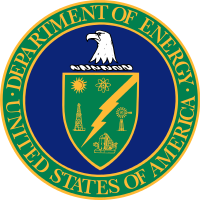 Department of Energy - Federal Departments
Department of Energy - Federal Departments
|
Year Founded:
1977
|
Employees:
14,608
|
Outlay:
$24B / year
|
Employee Expense:
$1.51B in 2022
|
The Federal Government is broken down into fifteen departments, each of which consists of a number of sub-departments and organizational groups tasked with accomplishing the Department's overall goals.
The Department of Energy focuses on all things nuclear. DOEs concern ranges from enacting rules and regulations production, disposal, and handling of nuclear material to managing the nations nuclear weapons. The DOE also manages more placid energy issues including energy conservation, energy research, and energy production. The Department of Energy even focuses on some non-energy related projects including research for the Hunan Genome Project.
In its offices and laboratories across the nation, the DOE ensures prosperity for the United States by ensuring our nations energy concerns are managed safely, effectively, and sustainably while developing new technologies needed for our nations future growth.
Who does the Department of Energy hire?
The Department of Energy employs many individuals with a background in the STEM fields. DOE conducts predominately research and technical type work. Even more administrative work such as policy requires significant insight from Physicists and Nuclear Engineers. That is not to say that the DOE does not also hire non-technical positions as well.
In 2022, the most common occupation employed by the Department of Energy was General Engineering at 1,386 employees. The second largest occupation was Miscellaneous Administration And Program with 951 employees.
The DOE is based in Washington D.C. adjacent to the Nation Mall. The DOE also has positions across the county at every location in the country that handles or deals with nuclear material.
History of the Department of Energy
The precursor to the DoE, the Atomic Energy Commission (AEC), was created regulate the future of nuclear energy after World War II. The AEC regulated nuclear weapons and the use of nuclear power for domestic energy needs. After the 1973 oil crisis, there was a concerted effort to consolidate the departments and agencies that create energy policy. On August 4, 1977 President Jimmy Carter signed the Department of Energy Organization Act which created the Department of Energy.
Today, the DoE handles policy related to energy sustainability, reliability, and efficiency. The DoE still handles matters related to nuclear power for domestic use and nuclear safety. Nuclear weapons are now managed by the Department of State.
Average Pay of an Employee in the Department of Energy
Agencies in the Department of Energy (2022)
| Agency | Employee Count | Total Salary Expense | Average Pay |
|---|---|---|---|
| Department of Energy | 13,149 | $1.31B | $128,603 |
| Federal Energy Regulatory Commission | 1,459 | $201.93M | $140,522 |
Data Sources
The information provided on these pages is sourced from the Office of Personnel Management (OPM)  Enterprise Human Resources Integration (EHRI)
Enterprise Human Resources Integration (EHRI)  dataset. Postal Service data is managed exclusively by the USPS
dataset. Postal Service data is managed exclusively by the USPS  . All information is displayed unmodified and as provided by the source agency.
. All information is displayed unmodified and as provided by the source agency.
Federal employee salaries are public information under open government laws (5 U.S.C. § 552). FederalPay provides this data in the interest of government transparency — employee data may not be used for commercial soliciting or vending of any kind. Learn more about the FederalPay Employees Dataset here.
Back to List of Departments
Join the our free mailing list to receive an update when 2025 rates are available.
